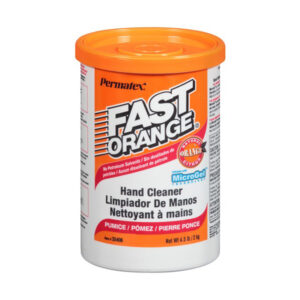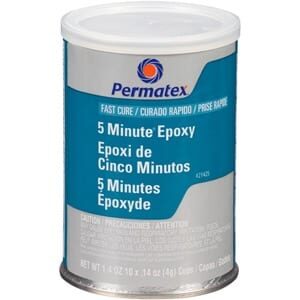Product Details
Permatex Vinyl & Leather Repair Kit
A complete DIY repair kit for home, automotive, and marine vinyl and leather upholstery. Contains: heat transfer tool, 7 colors of repair compound, clear vinyl adhesive and filler (net .34 fl. oz.), grain pattern paper, plastic spatula, and instruction sheet with color matching chart.
Automobile
Suggested Applications: Vinyl and leather upholstery, infant car seats, chairs, stools, and luggage.
Motorcycle
Suggested Applications: Seat, backrest, saddle bags
Marine
Suggested Applications: Marine upholstery, infant seats, chairs
Description
A complete DIY repair kit for home, automotive, and marine vinyl and leather upholstery. Contains: heat transfer tool, 7 colors of repair compound, clear vinyl adhesive and filler (net .34 fl. oz.), grain pattern paper, plastic spatula, and instruction sheet with color matching chart.
IMPORTANT:
READ ALL INSTRUCTIONS BEFORE USING THE REPAIR KIT.ALWAYS MAKE A PRACTICE REPAIR ON VINYL SAMPLE (IN KIT)BEFORE MAKING AN ACTUAL REPAIR!
- CLEAN THE DAMAGED AREA. Use a strong household cleaner to remove any dirt or grime. Make sure area is dry before starting the repair work. Trim off frayed, excess threads, or charred material(if burn damage) with a razor or knife.
- INSERT CLOTH BACKING FABRIC. NOTE: Very small (less than1/4 inch) cuts, burns or holes do not require a cloth backing fabric.If damaged area has deep depression, fill depression with plain cotton material to even surface before using backing fabric. Cuten closed thin fabric cloth slightly larger than the damage. Use the spatula to insert it into and under the damage to provide support for the repair.
- SELECT GRAIN PAPER. Enclosed are three (3) grain patterns: fine,coarse and medium. Select the grain paper closest to that of your damaged vinyl. On the top center of the grain paper draw an “X”.
- FILL IN DAMAGE. Pierce the seal on the Adhesive and Filler tube using the back of the cap. Squeeze out small amounts into damaged area using spatula until surface is level. NOTE: For rips or tears,apply adhesive under both edges and center to hold backing fabric in place. Allow 4 hours to dry. The adhesive will shrink slightly when dry, leaving a void which is then filled in with colored repair compound.
- MATCHING THE COLOR. Choose from seven (7) repair cup colors or intermix colors by mixing small amounts of color using spatula until right shade is achieved. Refer to color-matching chart included for suggestions. NOTE: White will lighten colors; yellow will brighten colors; black and dark brown will darken colors; browns can be made from red as the base, adding black and yellow.
- APPLYING THE COLOR REPAIR COMPOUND. Once the adhesive is dry, use the spatula to evenly apply the repair compound into the damaged area. NOTE: For holes or large damages, use the spatula to cover over the adhesive with the repair compound.Using the spatula very slightly overlap the repair compound on to the undamaged vinyl or leather. Feather the edges to make the surface smooth and even. DO NOT OVERFILL THE DAMAGED AREA. When filled properly it will be smooth across the damaged area, slightly overlapping onto the undamaged vinyl or leather.Next, place the grain paper directly onto the wet repair compound with the “X” positioned in the center of damage.
- HEAT CURING THE REPAIR. The most important step in the repair process. NOTE: Heating element required. Home iron recommended. If using iron, preheat to the highest setting for 3-5minutes. The heat transfer tool is the wooden dowel with the round metal tip in the kit. To heat the transfer tool, hold the wooden dowel and place the metal tip against the hot iron for 2-3 minutes.IMMEDIATELY place the hot metal tip directly onto the “X” marking on the grain paper. Rotate the heat tool in a rapid circular motion over the “X” for 1 minute. To properly cure, heat must be applied over grain paper on each section of repair compound. NEVER LET IRON OR HEAT TRANSFER TOOL DIRECTLY TOUCH THE VINYL OR LEATHER! If repair is large, reheat tool and repeat procedure as needed. Allow approximately 1-2 minutes for grain paper to cool. Once cooled, slowly peel off grain paper and examine there pair. If damaged area is tacky, repeat step 7. If there are any pinholes or spots that were not filled in properly, apply small additional amounts of repair compound into those areas and repeat step 7.(Do not store at temperatures above 90°F.)













Reviews
There are no reviews yet.